The Fourth Age has dawned in Middle-earth, and Gimli is determined to rebuild the dwarves’ ancient home. In our The Lord of the Rings: Return to Moria tips and tricks, we’ll show you how the game’s survival elements work, how to craft effectively, and how to navigate the mines of Moria.
Table of Contents
1) Character and world creation
Before you begin your journey to the ancient kingdom of Khazad-dûm in Return to Moria, you’ll need to create a character. This is extremely extensive and allows you to create your avatar exactly as you wish. Beard, head, hair, and skin color are all customizable. You can also add tattoos, scars, and jewelry, change the physique, and even define the personality, voice, and origin.
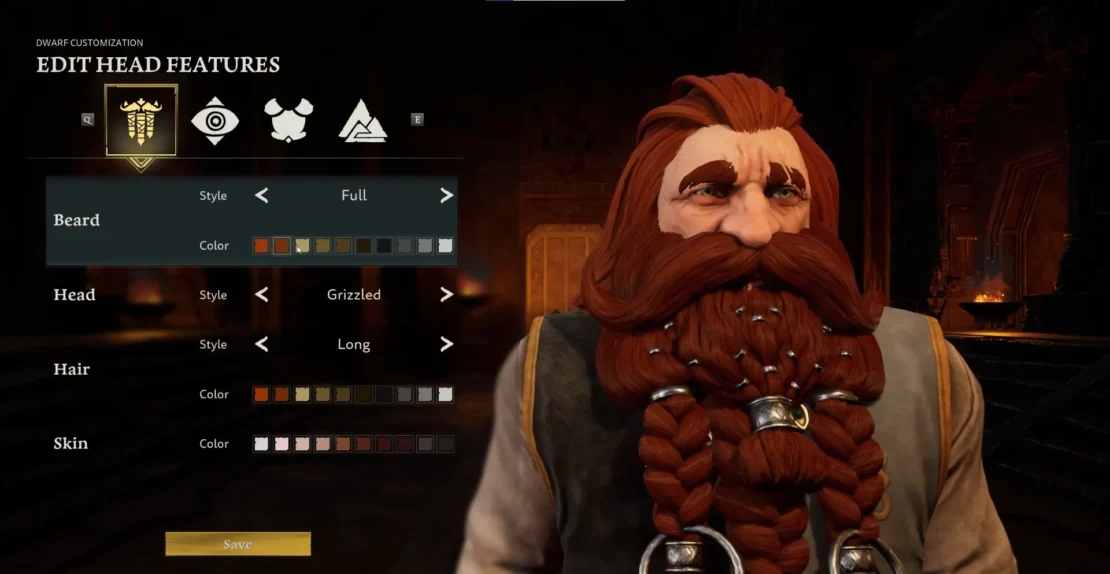
Your character can be changed at any time, and you can even retire them if you feel they’ve done enough to reclaim their former homeland.
The next point is the creation of the world. This is generated procedurally and is therefore different every time you play. You can create several of them and thus manage parallel save states. For each world, you can send invitations to your friends to explore it together. There is no matchmaking multiplayer.
2) Light and warmth are important
Return to Moria isn’t just about building. The game has some survival aspects that you need to consider if you want to survive. If you stay in the dark for too long, you’ll suffer penalties. So return to your camp regularly and keep track of the day and night cycle. Even though the game world is surrounded by walls, it’s still dark at night and light during the day.
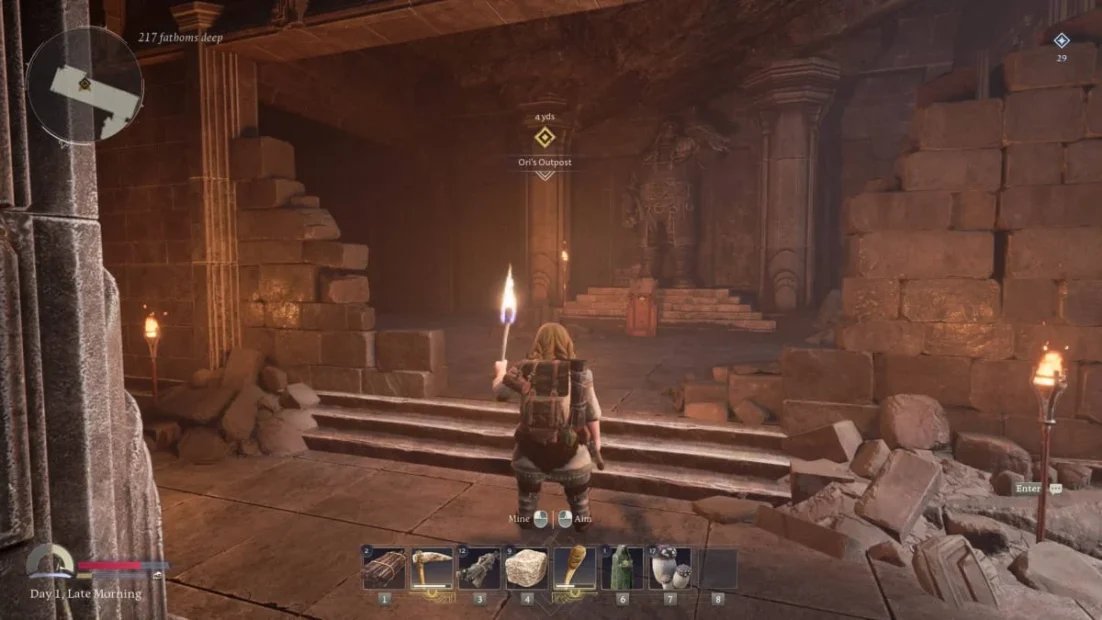
You also need to keep an eye on the temperature. Torches and fireplaces not only create light but also heat you when you’re near them. However, this only applies to stationary objects. If you carry a torch in your hand, it will neither give you warmth nor protect you from the negative effects of darkness. Its only advantage is that you can see more of your surroundings and see farther at night.
3) How to build a camp in Return to Moria
You’ll come across a small camp relatively early in Return to Moria. This is where you’ll start your next expeditions and manage your equipment and resources. You’ll also use it to restore your energy and fight your hunger. Although a camp only needs a fireplace and a place to sleep, we recommend that you expand your hub a bit.
A place to forge and a smelting furnace will become especially important as you progress so that you can turn the metals you find into bars. You’ll also need chests to store items and a dining table so you can eat. This doesn’t work when you’re on the move. In the world of Tolkien, food is only eaten at the table.
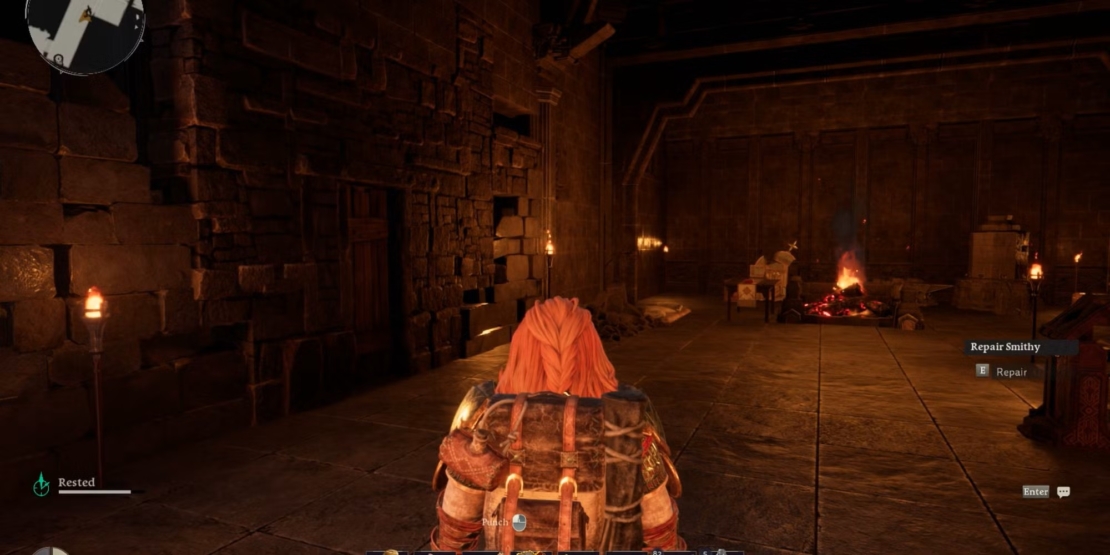
To build more camps in Return to Moria, it’s often enough to repair abandoned fireplaces. You can create completely new elements using the construction menu. Use ramparts and other defensive measures to protect yourself from random sieges. Orcs will appear from time to time and want to get their hands on you. Be prepared.
Prevent your opponents from causing too much damage, and above all, make sure they don’t destroy the basic building blocks of your camp, your fireplace, and your bedding. If you die, your equipment will be dropped and you’ll wake up in the last bed you used. It would be annoying if it no longer existed.
4) Negative status effects
As mentioned earlier, hunger, fatigue, cold, and darkness can affect your dwarf in The Lord of the Rings: Return to Moria. If you allow your hunger bar to empty until your stomach rumbles, you’ll get hungry. This will cause you to gradually lose some of your health. The only way to stop this is to eat at one of the camp’s dining tables.
Fatigue, on the other hand, has a direct effect on your stamina. If you don’t sleep regularly, the yellow bar will decrease and you’ll be weaker in combat and other actions. Your dwarf begins to despair in the cold and darkness. When your morale reaches a critical point, it has the same effect as food deprivation: your HP bar shrinks.
Make sure your camps are well-lit, and go to the fire pits regularly to warm up. You should keep an eye on your needs throughout the game to prevent negative status effects.
5) Resource tips
To build new structures, craft weapons, and generally progress, you’ll need a variety of resources. One of our most important The Lord of the Rings: Return to Moria tips and tricks is this: Gather everything you can find. Cut down trees, pick up scraps of wood from the ground, and loot metal veins that contain ores and other valuable materials. You can recognize the veins by their color, which contrasts with the rest of the wall.
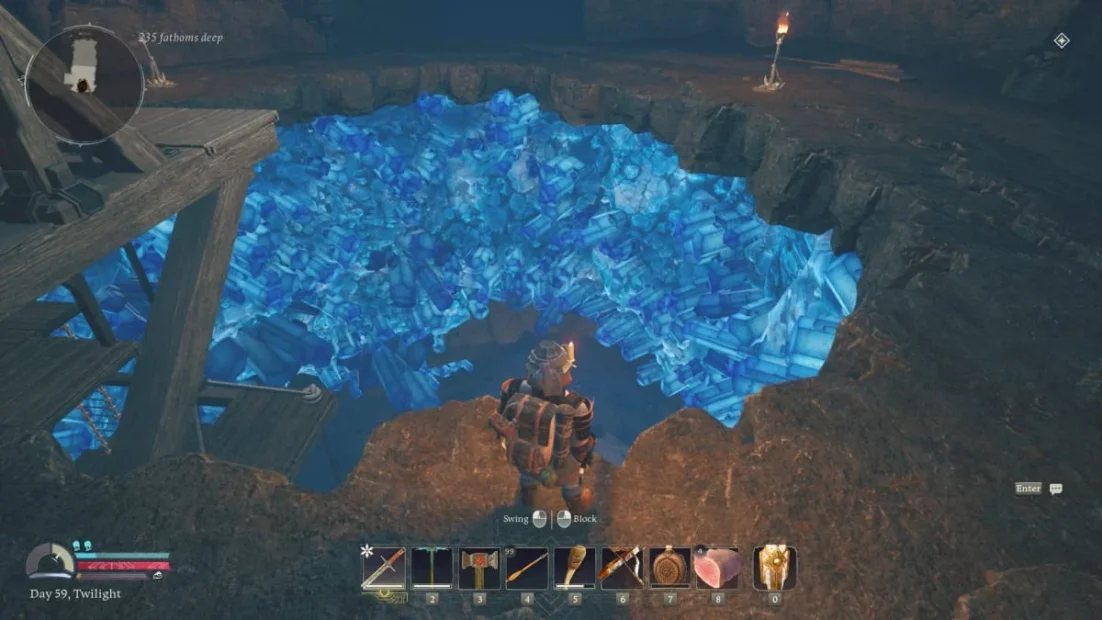
Often you won’t be able to reach the vein directly. So build small foundations and paths so you can get close to them and then mine them thoroughly. Enemies will also drop resources. Digging up one of the orc camps or fighting the goblins lurking on the paths can be worthwhile. More enemies spawn at night than during the day.
Special materials like elven wood can only be found in certain places in Return to Moria. And since the world is randomly generated, it’s impossible to predict exactly where you’ll find an item. Exploration is essential. Also, use your map to relocate ore veins that you’ve already found.
6) Return to Moria tips: Build storage rooms
To efficiently store all the resources you find, you need the right infrastructure in your bases. Build enough crates and pallets to stack your ingots, logs, and other materials. The good thing is that you can access the resources in the warehouse directly from the construction menu, so you don’t have to transfer everything to your dwarf’s inventory before you can use it.
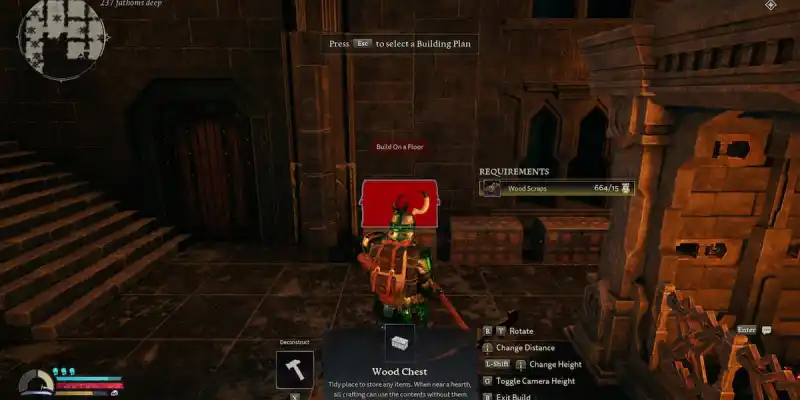
Get into the habit of storing your resources every time you return to your camp to satisfy your hunger or fight your fatigue. This includes all lumber, scraps of cloth, stones, and of course, ores. Food ingredients are also best left in storage. You can’t use them on the road anyway. So why waste inventory slots?
Even though slots can be expanded over time, you should still use them sparingly and always leave room for new items.
7) TLOTR: Return to Moria combat tips
The combat system in Return to Moria is fairly simple. You have a standard attack and a charged attack for offense, and a dodge and a block for defense. With the standard attack, you can string together combos of three, with the last hit dealing more damage.

If you’re not currently attacking, you should block. If you’re able to parry your opponent’s attack at the right moment, you’ll cause them to stumble. Although you should master and train these mechanics, your equipment makes the biggest difference in combat.
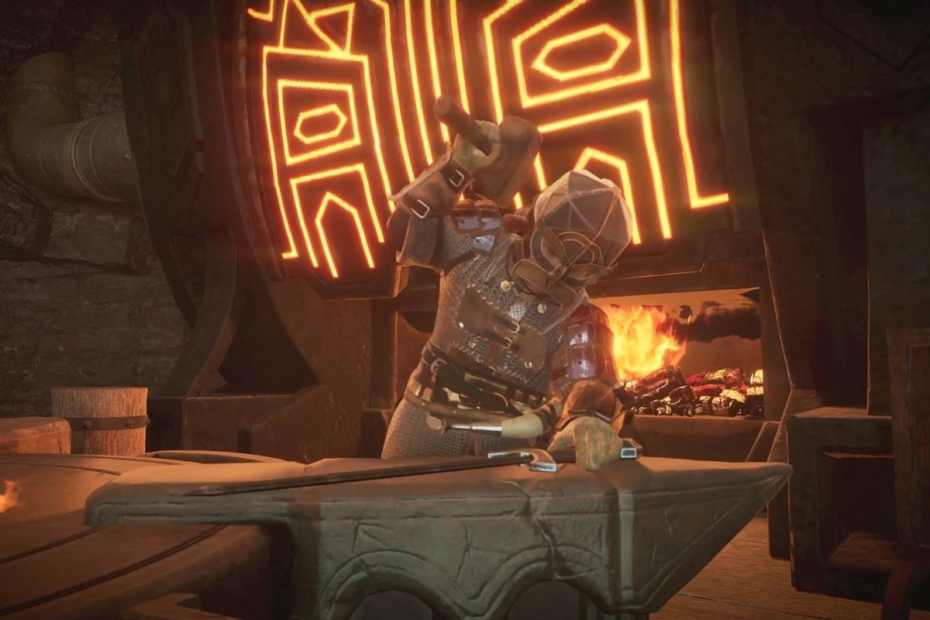
In the world of J.R.R. Tolkien, dwarves are known for their fantastic blacksmithing skills. You should live up to this reputation by crafting new weapons and armor regularly. This is the only way to survive larger hordes of enemies and sieges. Especially if you want to destroy an orc camp, you need to be well prepared.
You can use runes to upgrade your weapons. This magically improves them and sometimes gives them new effects.
8) Unlock recipes
Some items in Return to Moria can be crafted without recipes. However, if you want to craft more powerful equipment and more complex structures, you’ll need the appropriate recipes. Crafting recipes are learned by exploring the world and farming resources. The more you collect, the faster your crafting menu will grow.
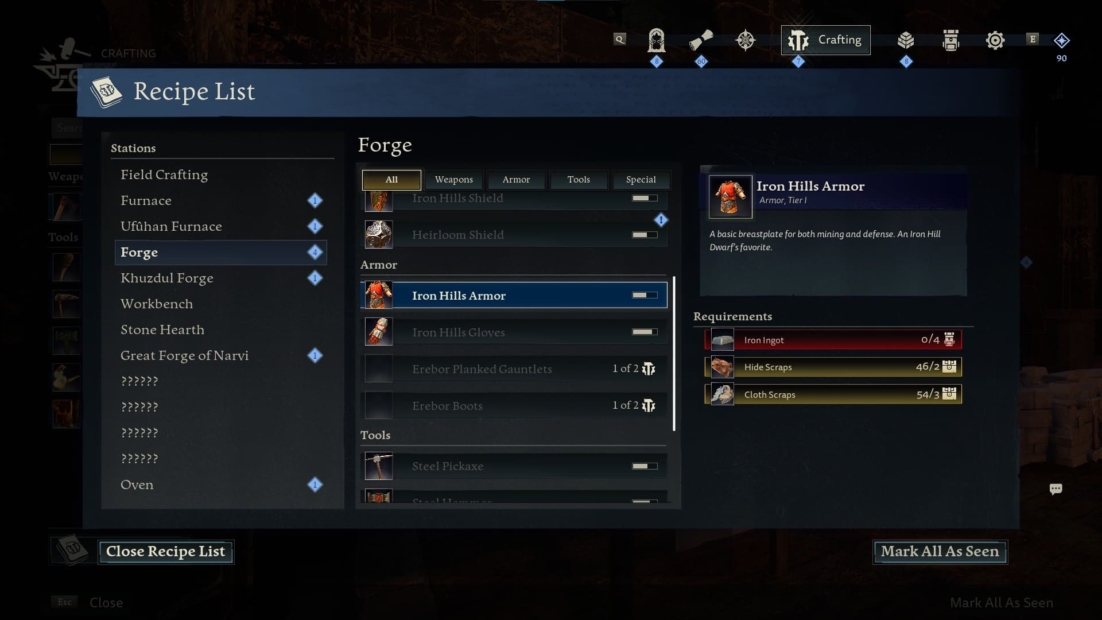
The blacksmith is a different story. Broken statues are scattered throughout the world. Your job is to repair them. This will provide you with recipe parts, and if you collect several of them, you’ll receive new blueprints for weapons and armor. The requirements for repairs vary from area to area in Return to Moria.
If certain enemy groups prove to be overpowering, you probably haven’t repaired all the statues yet. Your equipment acts as a sort of gate mechanism before you can enter a new area.
9) Explore Moria
The entire main quest of Lord of the Rings: Return to Moria revolves around exploring the game world. By exploring every nook and cranny, you’ll receive new quests, gather resources, uncover secrets, and discover artifacts. You’ll also meet interesting characters to help you along the way, many of whom will be familiar to Tolkien fans.
Unfortunately, every exploration involves backtracking, as you have to satisfy your needs and unload materials at the camp. This is where the fast travel points come in handy. But they also have a downside: you need Black Diamonds. These are rare and can only be obtained by raiding Orc camps.
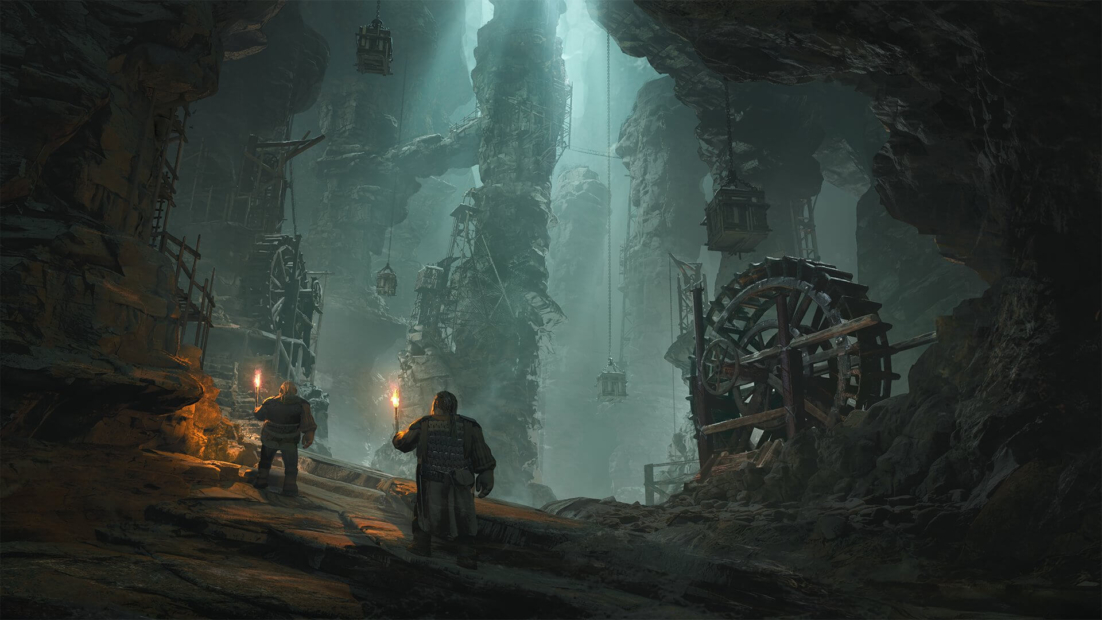
What you should look for are muznakans and chests. For the latter, you need to make keys to open them and take the contents. For the muznakans, you need to find the missing statuettes. If you succeed, you’ll gain access to a valuable treasure.
In some places, your dwarf will start to sing. The special thing about this is that the songs are taken directly from the Lord of the Rings books. One last tip: Don’t forget to take your pickaxe with you when you go exploring.
Conquer the Mines of Moria with PLITCH!
With our Lord of the Rings: Return to Moria tips and tricks, your dwarf will be perfectly equipped to face the adversities of Khazad-dûm. However, the problem of the backtracking loop can be very annoying in the long run. Every time you die on screen, you have to retrieve your equipment and then return to your camp to repair it. This wastes a lot of time.
The Lord of the Rings: Return to Moria cheats from PLITCH provide a remedy. Boost your energy or morale to avoid dying on the road, or give your armor infinite durability. With our single-player trainer, you can customize the game to make it the most fun for you.
To learn more about PLITCH and our mods, visit this blog or watch this video to see our Return to Moria cheats in-game.
Happy Gaming!